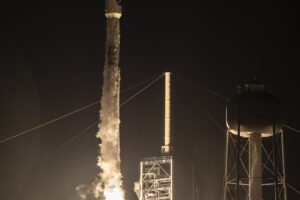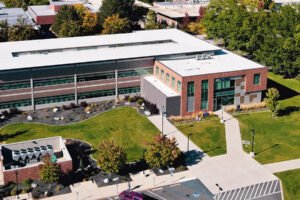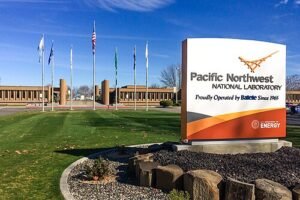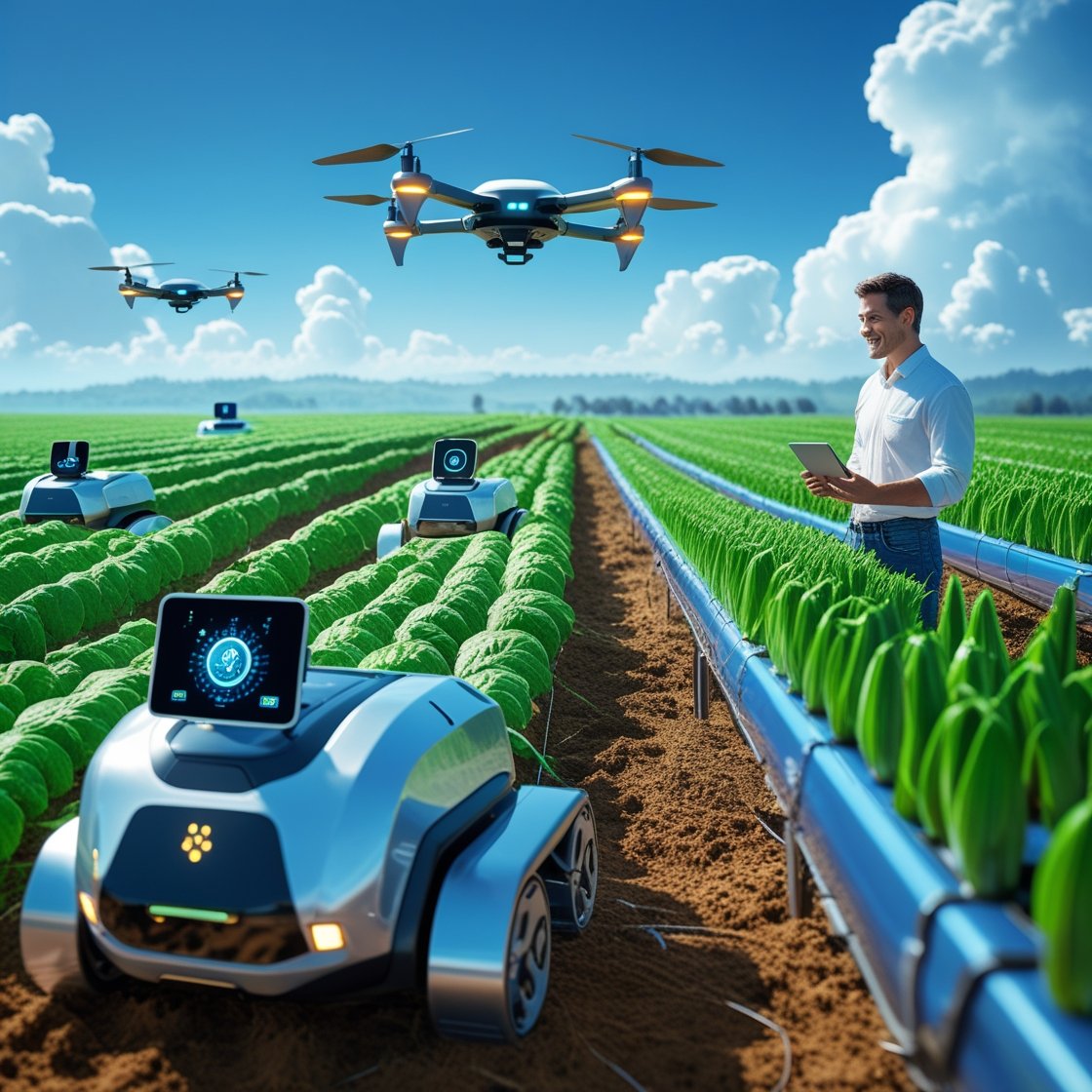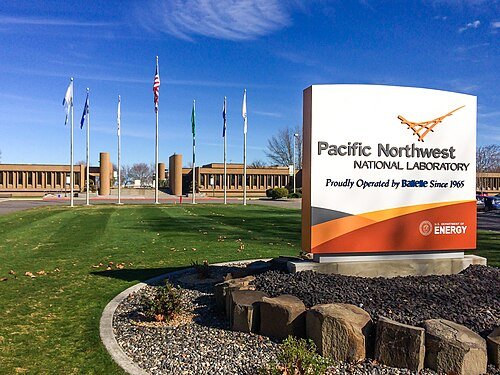The agricultural landscape of the Northwest United States is undergoing a significant transformation, as artificial intelligence (AI) increasingly takes root in the fields of Washington, Oregon, and Idaho. Recent advancements are demonstrating AI’s potential to revolutionize farming practices, promising increased efficiency, enhanced sustainability, and solutions to long-standing challenges such as labor shortages. This technological shift is not just a futuristic concept; it is actively being implemented on farms across the region, driving tangible results and shaping the future of agriculture.
The AI Revolution on Northwest Farms
The integration of AI into agriculture in the Northwest is rapidly evolving, with applications spanning various aspects of farming. In Washington state, for instance, AI-powered precision agriculture technologies have already demonstrated their ability to increase crop yields by up to 30%. This significant boost in productivity underscores the immediate impact AI is having on the region’s agricultural output. This transformation is being driven by a combination of innovative technologies and the analysis of vast amounts of agricultural data. Companies like Farmonaut are at the forefront of this movement, providing AI and big data solutions that empower smart farming practices across Washington. Their work indicates a clear trend: the agricultural sector in the Northwest is embracing the power of data-driven insights to optimize operations.
Beyond yield enhancement, AI is being applied to address a wide range of challenges faced by farmers in the Northwest. Ag-tech startups in the region are leveraging AI for tasks such as autonomously zapping weeds, meticulously monitoring plant health, and even identifying rocks in fields. This diversification of AI applications highlights its versatility and potential to provide solutions for very specific, practical issues that farmers encounter daily. The integration of AI for precision agriculture in Washington State is transforming traditional farming methods, enabling farmers to make data-driven decisions that enhance both crop yield and resource management. This shift towards data-informed agriculture signifies a fundamental change in how farming is approached in the Northwest.
Precision in Practice: Examples of AI at Work
The practical applications of AI on Northwest farms are diverse and growing. Farmonaut’s AI-powered precision agriculture technologies offer a compelling example. Their satellite-based crop health monitoring provides farmers with real-time Normalized Difference Vegetation Index (NDVI) data, while sophisticated AI algorithms analyze multispectral imagery to detect early signs of crop stress or disease. This allows for timely interventions, optimizing resource allocation and potentially preventing significant losses. Furthermore, Farmonaut provides precision irrigation recommendations based on detailed soil moisture analysis, leading to water conservation and improved crop health. Their Jeevn AI Advisory System goes a step further by offering personalized recommendations based on specific farm data, acting as a virtual consultant for growers.
Automation is another key area where AI is making significant strides in Northwest agriculture. Seattle-based startups like Aigen have developed autonomous robots powered by low-energy AI models that can run on solar power to autonomously remove weeds and gather crucial data for farmers, sending real-time crop information to a user-friendly mobile app. Similarly, Carbon Robotics, also based in Seattle, offers weed-zapping robots that utilize AI and computer vision to precisely target and eliminate unwanted plants. The use of drones equipped with AI technology is also becoming increasingly common in Washington State. These aerial vehicles are being deployed for comprehensive crop monitoring, detailed assessment of soil conditions, and optimized management of irrigation systems. AI-driven micro-tractors are also emerging as a solution for enhancing farm safety and addressing persistent worker shortages in Washington. These intelligent machines can navigate complex farm environments with remarkable accuracy, detect obstacles, and assess ground conditions, reducing the need for human labor in potentially hazardous tasks.
Harvesting Efficiency and Sustainability: The Benefits of AI
The adoption of AI in Northwest agriculture brings a multitude of benefits, impacting everything from productivity to environmental stewardship. As previously noted, AI-powered precision agriculture has been shown to increase crop yields by up to 30% in Washington. This increase in output can significantly improve the profitability and overall sustainability of farming operations in the region. Resource efficiency is another major advantage. Farmonaut reports that their precision irrigation recommendations have led to significant water savings on Washington farms. Moreover, their big data solutions have contributed to a remarkable 25% reduction in pesticide use across over a thousand farms in the state.1 This targeted application of inputs, guided by AI, not only reduces costs for farmers but also minimizes the environmental impact of agricultural practices.
The deployment of robots and AI-driven machinery is also helping Northwest farms address the ongoing challenges of labor shortages without compromising productivity. By automating tasks that are often labor-intensive or physically demanding, AI can help maintain or even increase production levels with a reduced reliance on manual labor. This is particularly crucial in a region where finding and retaining agricultural workers can be difficult. Furthermore, the core principles of AI-driven farming, such as optimized resource use and reduced chemical inputs, align perfectly with the growing emphasis on sustainable agriculture. By enabling more precise and targeted interventions, AI contributes to practices that are both economically sound and environmentally responsible. Farmonaut even suggests that AI-driven precision agriculture has the potential to reduce water usage by as much as 50% while still achieving the aforementioned yield increases.
Navigating the Challenges: Roadblocks to AI Adoption
Despite the numerous benefits, the widespread adoption of AI in Northwest agriculture is not without its challenges. One of the most significant hurdles is the acquisition of high-quality “ground truth” data needed to train and refine AI models. According to the CEO of Aigen, obtaining the large datasets required for effective AI in agriculture is both difficult and expensive. This lack of readily available and comprehensive data can hinder the progress and accuracy of AI-powered tools for the region’s specific crops and conditions.
The initial investment costs associated with implementing AI technologies can also be a barrier for many farmers, particularly smaller operations with limited capital. The cost of specialized equipment, sensors, software, and the necessary infrastructure can be prohibitive for some. Furthermore, the adoption of AI requires a certain level of digital literacy and technical understanding among farmers and agricultural workers. The learning curve associated with new technologies and the interpretation of data can present a challenge for those less familiar with digital tools. Beyond these practical considerations, there are broader societal concerns surrounding the integration of AI in agriculture. These include worries about potential job displacement due to automation, privacy issues related to the collection and use of farm data, and the vulnerability of interconnected systems to cyberattacks. The lack of transparency in how some AI algorithms make decisions (the “black box” problem) can also erode public trust and hinder adoption. Finally, even the process of training large AI models can have a significant carbon footprint, raising questions about the overall sustainability of the technology.
Voices from the Field and Lab: Expert Opinions
Experts in the Northwest region offer valuable perspectives on the integration of AI in agriculture. Kenny Lee, CEO of Aigen, expresses optimism about the technology’s ability to solve farmers’ problems, stating, “The more technology that we can offer farmers to help them with their problems, the better the world is going to be for it”. Keith McCall, founder of Pollen Systems, acknowledges that “AI in agriculture is still in its ‘early stages'” but envisions a future where farmers have access to “personalized AI assistants”. Vivek Nayak, co-founder of TerraClear, highlights the ongoing challenge of refining AI models for agriculture, noting, “But getting from something that’s moderately accurate to highly accurate is extremely challenging”.
Jordan Jobe, manager of the AgAID Institute at Washington State University, emphasizes the collaborative nature of this technological advancement, stating, “Nobody expects one person to have all the skills, and each individual will bring something to the table”. Futurist Jim Carroll, speaking at a Northwest Farm Credit Services conference, characterizes Northwest farmers and growers as innovative and willing to embrace new technologies, saying, “‘the future belongs to those who dare to go there’ – which defines the attitude of many of today’s farmers and growers”. Paul Mikesell of Carbon Robotics observes that farmers in the region are “incredibly inquisitive” and quickly understood the benefits of their AI-powered weed-zapping technology. He also notes the potential for AI to transform agricultural work, creating “new and better jobs for the existing farmworkers, as well as attract young people”.
By the Numbers: Adoption Rates and Impact
While specific data on AI adoption rates within Northwest agriculture is still emerging, the reported impact on crop yields in Washington State provides a compelling indicator of its potential. The up to 30% increase in yields from AI-powered precision agriculture demonstrates a tangible and significant benefit for farmers. Nationally, however, surveys suggest that the adoption of AI in the broader agriculture sector is still relatively low compared to other industries. This discrepancy could indicate that the Northwest region is at the forefront of this technological shift, or it might reflect the early stage of broader adoption nationwide. Market reports project substantial growth in the AI in agriculture market both globally and within the United States in the coming years. This anticipated growth suggests increasing investment and adoption of AI technologies in agriculture, with North America expected to hold a significant share of this market.
Fueling the Innovation: Research and Technology Hubs
The Northwest boasts a strong ecosystem of universities, research institutions, and technology companies driving AI innovation in agriculture. The AgAID Institute at Washington State University stands out as a major hub, funded by the USDA-NIFA and involving researchers from multiple universities and an ag-tech startup. AgAID’s mission is to foster partnerships between AI and agricultural communities, focusing on developing AI solutions for critical challenges like labor shortages, water scarcity, and climate change. Oregon State University is also a key partner in the AgAID Institute, further strengthening the region’s research capacity. WSU’s Center for Precision and Automated Agricultural Systems (CPAAS) is another significant contributor, dedicated to advancing and facilitating the adoption of smart farming solutions. The AgAID Institute actively engages students through events like the AgAID Digital AgAthon, fostering the next generation of experts in this field. Beyond universities, numerous ag-tech startups in the Pacific Northwest, such as Aigen, Carbon Robotics, Pollen Systems, and TerraClear, are actively developing and deploying AI-powered solutions for various agricultural tasks.
Policy and Progress: Government Initiatives
Government initiatives in the Northwest are also playing a role in supporting the adoption of advanced technologies in agriculture. The Washington State Department of Agriculture (WSDA) offers various grant programs aimed at enhancing the competitiveness of specialty crops, supporting local food systems, and improving agricultural practices. While not always explicitly focused on AI, these grants can provide funding for projects that incorporate AI technologies to improve efficiency, sustainability, and market access. For example, the Agricultural Carbon Benefits Program- Climate-Smart Equipment Grants can reimburse farmers for the cost of equipment like tractor GPS units, which are essential for precision agriculture practices often integrated with AI systems. Similarly, the Local Food System Infrastructure Grant can fund technology improvements for farms and food processors, potentially including AI-powered solutions. These state-level initiatives, along with federal grant opportunities available through the USDA, create a supportive environment for the development and adoption of AI in the Northwest agricultural sector.
Wrapping it up…
Artificial intelligence is rapidly transforming the agricultural landscape of the Northwest United States, offering significant potential to enhance crop yields, improve resource efficiency, and address critical labor challenges. While obstacles such as data acquisition and initial investment costs remain, the region benefits from a robust research and innovation ecosystem, with leading universities, dynamic startups, and supportive government initiatives all contributing to the advancement of AI in farming. As the technology continues to evolve and adoption rates increase, collaboration between researchers, technology developers, farmers, and policymakers will be crucial to ensure that AI is implemented responsibly and equitably, paving the way for a more sustainable, productive, and prosperous future for agriculture in Washington, Oregon, and Idaho. The journey towards smart farming in the Northwest is underway, and the seeds of innovation planted today promise a bountiful harvest tomorrow.

